Opinion & Analysis
Should we really “roll back” the golf ball? A deep dive…
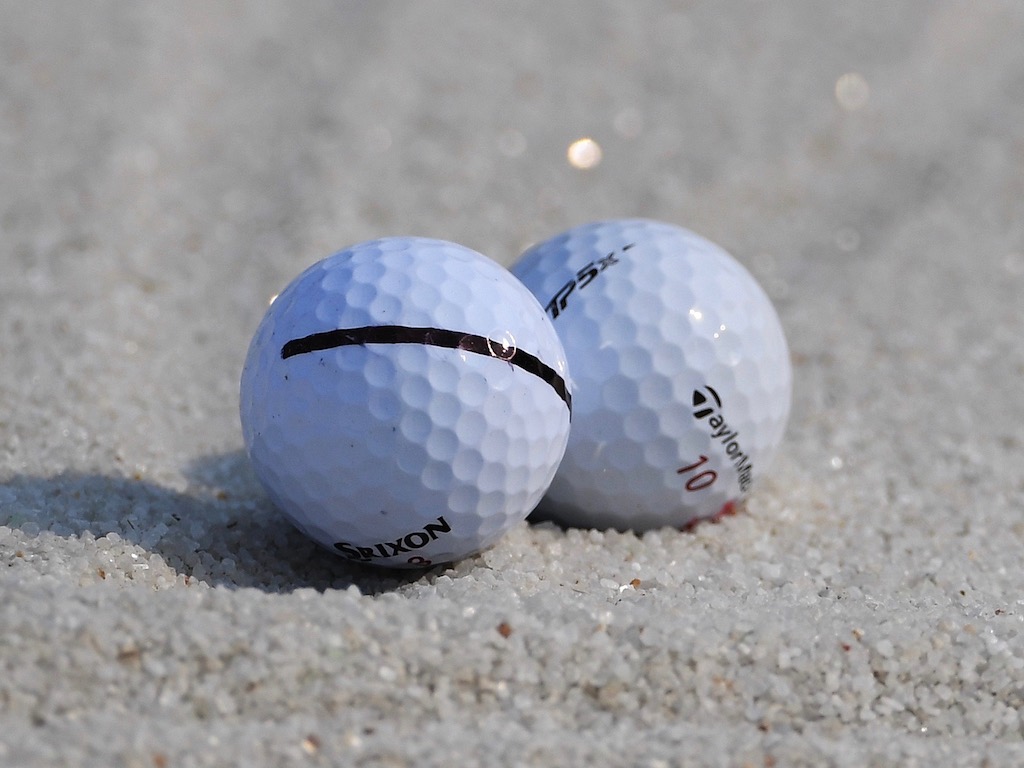
The USGA and R&A ruling bodies recently released their 2017 Distance Report, which gathered data from seven major tours. The driving distance of each player was measured using TrackMan and ShotLink on two select holes during each tournament. This analysis cumulatively yielded roughly 40,000 pieces of data over the course of a year. The report revealed that the average driving distance on the PGA Tour increased by a total of 3 yards over the past year, while the greatest increase was 10 yards on the Web.com Tour.
The report ignited a firestorm of comments. The general consensus is that the sport is facing a crisis — depending on who you believe and/or your group affiliation. They all have a vested interest in the outcome.
There are two issues on the table. They are linked together, but they also have individual considerations.
- The Distance the Golf Ball is Traveling: There are many reasons why the ball is going farther than ever before. There are some in the industry who believe the golf ball is not the problem and it would be a mistake to roll it back.
- The Golf Ball Itself: There are others in the industry of the opinion that the answer is to roll back the distance the golf ball travels by as much as 20 percent. Those in this group believe the golf ball is the problem, regardless of other factors that are contributing to what has been dubbed a“Distance Creep.”
In both cases, most everyone agrees that something must be done. The numbers tell the story. In 1980, the first year of officially measured drives on tour, the average distance off the tee was 257 yards. In the early 2000s, there were only a few players who we able to drive the ball over 300 yards. Today, there are 57 PGA Tour players who average 300 yards or more off the tee. A major concern is that most of the great courses throughout the country are becoming obsolete.
Wally Uihlein, the former leader of Titleist, has argued there are many contributing factors to the increased distances shots are now traveling: “thin face, oversized titanium drivers; low-spinning, solid core, high performance golf balls; the physiology of today’s professional golfer; improved technique and instruction; mobile launch monitors and customization of equipment; improved golf course conditioning and agronomy,” as he told GOLF in 2017.
GROUP 1
These three men, together with their respective organizations, will ultimately make the decision as to what should be done with respect to the golf ball and distance issue.
- Mike Davis, Executive Director of the USGA: Davis is the lead spokesman on this issue for the USGA. “These courses are expanding and are predicted to continue to expand. All it’s doing is increasing the cost of the game. The impact it has had has been horrible.”
- Mark Nowell, President USGA: The newly elected President’s comments have been more general in nature. “We have been, and we’re going to be focused on what that situation is and how we can deal with it … there is no fixed timetable, but we will commence this process immediately and endeavor to reach a conclusion as promptly as possible.”
- Martin Slumbers, Chief Executive of the R&A: The R&A will vote in accordance with the USGA. “I’m looking at the balance between skill and technology — are they in balance, is it good for the recreational game? And should it be the same for the elite game?”
GROUP 2
There are two other groups that have the ability to sway both public and private opinion. They are the PGA of America and the PGA Tour. The leaders of these two groups believe that the golf ball in not the problem, but that there are other extraneous factors responsible for the increased distance the golf ball travels.
- Jay Monahan, Commissioner of the PGA Tour: “We believe this increase in club head speed is mostly attributable to a combination of factors, such as increased player athleticism and fitness, physical build of the player and enhancements in equipment fitting.”
- Pete Bevacqua, CEO of the PGA of America: “We are highly skeptical that rolling back the golf ball in whole or part will be in the best interests of the sport and our collective efforts to grow the game.”
GROUP 3
And then there are the players, past and present. Jack Nicklaus has been at the forefront of this issue dating back to 1977 when he first called on the USGA to look at making a change to the ball. Nicklaus believes the distance the ball travels should be rolled back 20 percent.
- Tiger Woods agrees with Nicklaus that the ball travels too far. “I think the ball is going too far,” he said. “You would not want to take away the amateur’s ability to hit the ball farther and straighter, but with the touring pros you might want to roll the ball back… like in baseball you would have a pro ball and an amateur ball.
- Dustin Johnson agreed with Tiger Woods in a press conference in late November 2017, but then he changed his mind a few months later.” When was the last time you saw someone make the game too easy? I don’t really understand what all the debate is about, because it doesn’t matter how far it goes; it is about getting it in the hole.”
- Geoff Ogilvy agrees with Tiger Woods, using a similar baseball analogy. “Major League Baseball in America, they use wooden bats … everywhere else in baseball, they use aluminum bats. That’s kind of what’s happened to us at least with the drivers of these big hitters. We’ve completely outgrown the stadiums. So, do you rebuild every stadium in the world? That’s expensive. Or make the ball go shorter?”
- Gary Player, Hale Irwin and the late Arnold Palmer all have at one time or another agreed with Jack Nicklaus that something needs to be done with the ball because it travels too far.
GROUP 4
The last group that is a stakeholder in any decision made are the manufactures. A required change in the ball could mean thousands if not millions of dollars required to retool golf ball manufacturing plants. And from Titleist’s perspective, as they are the leader in sales with the greatest presence on the professional tours, there looms the possible loss of market share.
- Wally Uihlein, Former President and CEO of Acushnet, Titleist’s parent company, does not believe the ball is the problem. Titleist conducted its own study adding further context to the Distance Report’s finding of a three-yard average gain year over year across golf’s seven prominent professional tours. Titleist’s research shows a 0.5-yard gain in distance at PGA Tour events in 2017 that were played at the same course as 2016. Of the courses that were new for the 2016-17 season, Titleist found most of increase came at three of the major championship venues: the U.S. Open (Erin Hills vs. Oakmont, +20.4 yards), the British Open (Royal Birkdale vs. Royal Troon, +8.1 yards) and the PGA Championship (Quail Hollow vs. Baltusrol, +7.0 yards).
- Angel Ilagan, Bridgestone Golf President and CEO, says the company agrees with Tiger Woods that the distance the pro ball travels should be reduced while the equipment and the ball should be “juiced for the amateur.” “As it relates to the Tour, there needs to be something to standardize the ball because these guys are hitting it way too long,” he said.
- David Abeles, CEO and President TaylorMade: “We believe innovation and technology lead to better performance, and better performance brings more joy to the game for all who play it … As the discussion around bifurcation and rollback formalizes, we look forward to having a seat at the table to lend our voice. Until then, we will continue to create the best performing products for all golfers.”
In the end, we know it is about what the R&A and the USGA decide. They are like the Supreme Court; their decision is final. The PGA Tour and the PGA of America are like co-counsels presenting their case unofficially to the public and the media. And the players are on the opposing side, presenting their case for change—a roll back of the distance the ball travels.
What will the USGA decide, and when will it decide? We have seen through other changes at the USGA and R&A that they prefer a slow rollout rather than an fast rollback. The USGA has had to deal with other sensitive issues in the past. The current issue is reminiscent of the “battle of the groves” when Ping’s Karsten Solheim sued the USGA for $100 million in 1987. The lawsuit was eventually dropped, and Ping’s Eye2 irons were grandfathered in.
There was most recently the ban on anchoring, in which the PGA Tour and the PGA of America were considering enacting their own rules. After the USGA announced its intention in May 2013, the ban went into effect January 1, 2016. There was a period in which open discussion was entertained, and then after listening to various points of view the USGA set a date in which the ban on anchoring would go into effect: January 16, 2016. The PGA of America and the PGA Tour eventually capitulated.
In 1998, there was the issue of thin-faced drivers that were popularized by Callaway and TaylorMade. The USGA implemented a new rule restricting the coefficient of restitution to a value of 0.83 for drivers. The rule was then adopted world-wide by 2003.
It’s clear that the USGA moves carefully. It’s interested in hearing every point of view, which takes time. It also favors setting a date in the future when the rules change will become effective but, in the meantime, there is a waiting period in which those who are affected have the time and opportunity to adjust. What is also clear is the USGA is interested in doing what’s best for the game. While its actions may at times seem capricious and arbitrary, those who hold that opinion are the individuals that have been directly affected by a rules change.
As in the past, the USGA has shown that it will not back down from a fight if it believes the cause is just. At the same time, however, the USGA will listen to every point of view. This approach obviates the possibility of an out-and-out showdown. The greatest predictor of future behavior is past behavior, and for that reason I would predict that the USGA will announce its intention to make a change in the rules with regards to the ball in 2018. But whatever changes it decides, it will not go into effect until 2020 for professionals.
As for amateurs, the USGA will have to decide what the best approach is when it comes to them. They could:
- Reduce the distance the ball travels to match the standards applied to the professionals
- Keep it the same as today without making any changes
- Increase the limit the ball travels
Those who are in favor of regulating the distance the ball travels are not in favor of doing anything that would reduce the enjoyment of the amateur or have a negative effect on growing the game. As we consider the issue, we must believe that Mike Davis, Executive Director of the USGA, meant what he said over dinner with Jack Nicklaus in November of 1997. They were discussing the increasing distance the ball is traveling, and sarcastically Nicklaus asked Davis, “Are you going to study the issue for another 10 years?”
And Davis answered defensively, “No, no, no, we’re going to get there… and I’m going to need your help when we do.”
That sounds like a promise to me. What do you think?
- LIKE73
- LEGIT27
- WOW1
- LOL10
- IDHT2
- FLOP13
- OB6
- SHANK40
19th Hole
Vincenzi’s 2024 Masters betting preview: Niemann to play star role at Augusta National
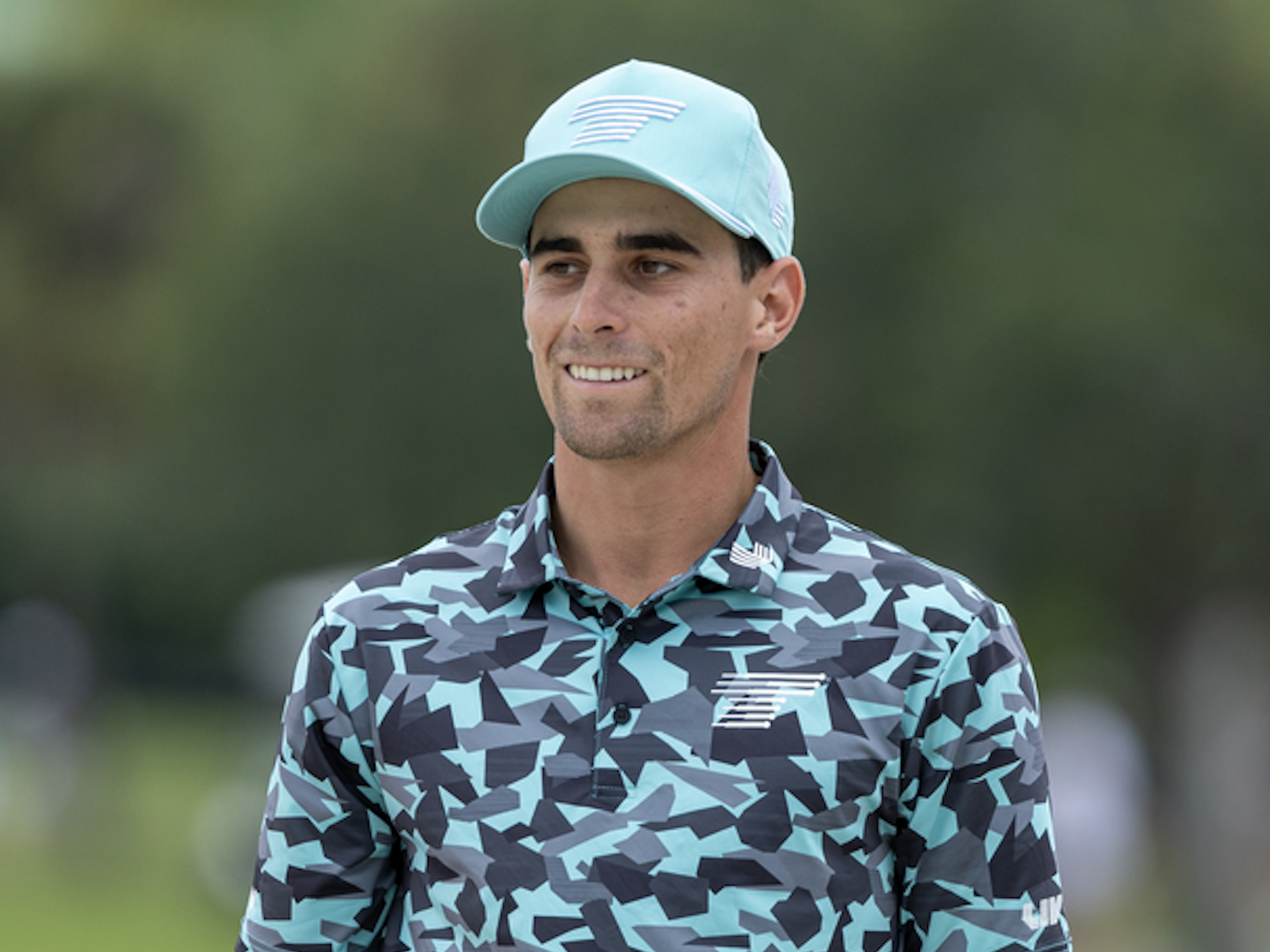
It’s been over nine months since we saw Brian Harman parlay a dominant performance at Royal Liverpool into a claret jug. After another major offseason filled with a feud between the PGA Tour and LIV Golf, talks of a merger, and a multitude of questions regarding the future of the game, the golf world is desperate for all of the best players in the world to come together again for a major championship.
We return to Augusta National with excitement at a fever pitch. Scottie Scheffler has separated himself as the best player in the world heading into the Masters. At the moment, the 27-year-old seems to be an unstoppable force. However, questions about Scheffler’s up-and-down putter once again resurfaced as he missed multiple short putts at the Texas Children’s Houston Open including a 5’11” putt to force a playoff with Stephan Jaeger.
Additionally, a handful of the PGA Tour’s top players such as Justin Thomas, Rory McIlroy, Will Zalatoris, Patrick Cantlay, Tommy Fleetwood and Jordan Spieth make their way to Augusta National with their current form in question.
Plenty of LIV golfers may be up to the task of conquering Augusta, but with so much time in between the last two majors, it’s not always easy to decipher how their games will stack up against Scheffler and co.
Last year, some important changes were made at Augusta National. The par-5 13th (Azalea) was lengthened by 35 yards and now measures 545 yards. Last year, Azalea played as the toughest of the four par 5s, and players averaged 4.74 for the week, which was down from 4.85 in 2022. However, eagles, birdies and bogeys were all up, so the lengthening achieved less pars, which equals more excitement.
Without further ado, let’s get into the course breakdown and analyze some important statistics for Augusta National.
Augusta National is now a 7,510-yard par-72 with lightning-fast Bentgrass greens. The course’s primary defenses are the contoured greens, swirling crosswinds, the topography of the course, which creates uneven lies and the small landing areas that golfers will need to hit to avoid tight run-off areas around the greens.
Past Winners at the Masters
- 2023: Jon Rahm (-12)
- 2022: Scottie Scheffler (-10)
- 2021: Hideki Matsuyama (-10)
- 2020: Dustin Johnson (-20)
- 2019: Tiger Woods (-13)
- 2018: Patrick Reed (-15)
- 2017: Sergio Garcia (-9)
- 2016: Danny Willett (-5)
- 2015: Jordan Spieth (-18)
- 2014: Bubba Watson (-8)
- 2013: Adam Scott (-9)
- 2012: Bubba Watson (-10)
- 2011: Charl Schwartzel (-14)
- 2010: Phil Mickelson (-16)
In this article and going forward, I’ll be using the Rabbit Hole by Betsperts Golf data engine to develop my custom model. If you want to build your own model or check out all of the detailed stats, you can sign up using promo code: MATTVIN for 25% off any subscription package (yearly is best value).
Key Stats For Augusta National
Let’s take a look at the six most important metrics at Augusta National and determine which golfers boast top marks in each category over their last 24 rounds. This should give us a good starting point for building out a betting card.
Strokes Gained: Approach
Approach is historically the most important statistic at Augusta National. The sloping, speedy greens and run-off areas create small landing spots that can be difficult to hit.
Last year, Jon Rahm ranked 6th in the field in Strokes Gained: Approach. Overall, five of the past seven winners at Augusta have ranked in the top 6 in the category. Distance helps, but Augusta National is a second-shot golf course.
Total Strokes Gained: Approach in past 24 rounds:
- Scottie Scheffler (+1.30)
- Corey Conners (+0.99)
- Shane Lowry (+0.88)
- Tony Finau (+0.85)
- Austin Eckroat (+0.85)
Course History
More so than any other course on TOUR, familiarity with Augusta National is crucial. Only one player has ever won the Masters on their first try — Fuzzy Zoeller in 1979. Meanwhile, there are 17 golfers in history who have multiple green jackets.
In most cases, the Masters champion has shown some good form at Augusta in the past. Prior to Scottie Scheffler’s 2022 victory, he finished T19 and T18 in his first two trips to the course. Prior to 2023, Rahm had finished in the top-10 of four of his six starts at The Masters.
Total Strokes Gained: Total at Augusta National in past 36 rounds (per round, minimum eight rounds):
- Will Zalatoris (+2.91)
- Jon Rahm (+2.28)
- Jordan Spieth (+2.22)
- Scottie Scheffler (+2.22)
- Dustin Johnson (+2.01)
- Rory McIlroy (+2.00)
- Hideki Matsuyama (+1.90)
- Justin Rose (+1.85)
- Rickie Fowler (+1.72)
- Russell Henley (+1.60)
Par 4 Scoring Average
Since plenty of players can reach the par 5s at Augusta in two, par-4 scoring becomes more important. The golfer who separates themselves on the par 4s will be able to gain ground on the field.
Par 4 Scoring Average in past 24 rounds:
- Scottie Scheffler (+3.88)
- Chris Kirk (+3.92)
- Jordan Spieth (+3.93)
- Peter Malnati (+3.93)
- Xander Schauffele (+3.93)
Strokes Gained: Around the Green
Golfers with a solid short game tend to fare well at Augusta National. The run-off areas are treacherous, and players will often be scrambling to get up and down.
The majority of players who have won at Augusta National have a great short game and have shown consistent ability to get up and down from tough spots.
Total Strokes Gained: Around the Green in past 24 rounds:
- Hideki Matsuyama (+0.71)
- Scottie Scheffler (+0.66)
- Patrick Reed (+0.61)
- Xander Schauffele (+0.53)
- Lucas Glover (+0.51)
Strokes Gained: Off the Tee
Augusta National is most definitely a second shot golf course. Golfers can get away with a missed fairway here and there, however, it’s important that the misses with driver aren’t too wide of the target or there is serious trouble to be had.
Total Strokes Gained: Off the Tee in past 24 rounds:
- Bryson DeChambeau (+1.04)
- Rory McIlroy (+0.85)
- Scottie Scheffler (+0.84)
- Xander Schauffele (+0.71)
- Ludvig Aberg (+0.68)
Strokes Gained Putting: Fast Bentgrass
The USGA calculates that, on average, the greens at Augusta National are the fastest greens in the country. Three-putting is fairly common at Augusta and golfers must be able to combat the speed of the greens with effective lag putting.
Total Strokes Gained: Putting on Fast Bentgrass in past 24 rounds:
- Justin Rose (+1.43)
- Sahith Theegala (+0.97)
- Min Woo Lee (+0.88)
- Cameron Smith (+0.70)
- Patrick Reed (+0.70)
Statistical Model
Below, I’ve reported overall model rankings using a combination of the six key statistical categories previously discussed.
These rankings are comprised of SG: App (25%); Course History (16%); Par 4 Scoring Average (10%); SG: Putting on Fast Bentgrass (16%); SG: OTT (16%). and SG: ARG (16%).
Last year, Jon Rahm ranked first in this model
- Scottie Scheffler
- Xander Schauffele
- Hideki Matsuyama
- Tony Finau
- Justin Thomas
- Shane Lowry
- Will Zalatoris
- Corey Conners
- Si Woo Kim
- Rory McIlroy
- Stephan Jaeger
- Jordan Spieth
- Chris Kirk
- Keegan Bradley
- Wyndham Clark
- Sahith Theegala
- Russell Henley
- Collin Morikawa
- Matt Fitzpatrick
- Patrick Reed
My 2023 Pick:
Jon Rahm (+950) (FanDuel)
A few months ago, I never thought that I’d be able to say that Rahm would be going slightly under the radar heading into the 2023 Masters. It’s not that Rahm has done anything wrong, but both Scheffler and McIlroy have undoubtedly surpassed him as the scorching hot, super-elite, top of the market betting favorite category.
Since his win at Riviera, the Spaniard has finished 39th at Bay Hill, withdrew at The Players Championship, and failed to get out of the group stage at the WGC Dell Match Play. On the other hand, Scheffler won The PLAYERS Championship and McIlroy finished third at the WGC Dell Match Play.
Rahm has made six starts at The Masters and has come in the top-10 in four of them. The 28-year-old has incredible power off the tee, a requirement at Augusta which always plays longer than the scorecard indicates. He’s also incredible around the greens and ranks third in the field in Strokes Gained: Short Game, which is a combination of around the green play and putting, in his past 24 rounds.
As we’ve seen over the years at The Masters, having the ability to chip and putt your way out of difficult situations is a fundamental aspect of getting it done at Augusta National.
While Scheffler has made a strong case to be viewed as the world’s best player, I still believe that title belongs to Rahm. This will be the year Rahmbo joins the ranks of Seve Ballesteros, José María Olazábal, and Sergio Garcia as natives of Spain to don a green jacket.
2024 The Masters Picks
Brooks Koepka +2500 (DraftKings)
In order to win the 2024 Masters, a player will have to go toe-to-toe with Scottie Scheffler, who’s hitting the ball as anyone in golf over the last two seasons. When building a betting card this week, it’s important for me to choose players that I believe can stare Scheffler down on the weekend at Augusta National. Brooks Koepka fits that bill.
Koepka’s lackluster performance at LIV Miami is concerning, but he’s the type of player who can turn it on quickly during the week of a major championship. Although I’d have preferred, he played well last week, I’ll take the odds discount we got as a result of his most recent results.
Prior to LIV Miami, Koepka appeared to be in solid form. He finished in the top twelve in four of five starts on LIV this season. When it comes to the five-time major champion, it’s well known that he has another gear for major championships. Everything he’s done both in the off-season and during the LIV season is to gear up for the year’s first major at Augusta National.
In his past five starts at Augusta National, the 33-year-old has three top-7 finishes, including two runners-up. The two years when he played poorly (2019 and 2020) were when he was nowhere near 100% healthy. All signs point to Brooks being in a great place physically as we enter major season.
Last year, Koepka was the 36 and 54-hole leader prior to letting the green jacket slip away to Jon Rahm. He used the result as a springboard to win his 5th major at Oak Hill at the PGA Championship.
Brooks enters the week looking to get one step closer to achieving the career grand slam and golf fans would be foolish to rule him out.
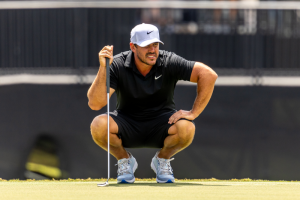
Joaquin Niemann +2800 (BetRivers)
Full disclosure, I bet Niemann the second he was invited to The Masters back in February at +8000. Although the odds have shortened dramatically since then, I can’t pretend that the Chilean isn’t one of the players who has a real chance to win the 2024 Masters.
While I was speaking with Niemann back in March, he told me how much he loves Augusta National.
“Yeah, it’s a place that I love. I’ve been playing good golf. Especially last year, I wasn’t playing my best golf, and I had a good week there and made triple on 11 that kind of killed me a little bit.
I feel like I’m getting more ready and more prepared every time. My game is getting better too. I know that I’m playing good enough to be in that situation that I can have a chance to win the Masters and it’s all about how I react to that situation.
So yeah, I’m going to prepare myself to be ready for that situation if it happens and I can fight for the title on the Sunday which would be awesome.”
As Niemann alluded to, the Chilean was able to have his best career finishes at The Masters (T16) despite not being in the best form. This year, Niemann comes into the week playing better golf than anyone in the world with the exception of Scottie Scheffler. The 25-year-old has won three times since December and has shown the world why he was regarded as one of the games future stars since he was a teenager.
Historically speaking, Joaco’s win at Riviera a few years back seems to be an indicator of potential success at Augusta National. Fourteen players have won at both historic courses including Hideki Matsuyama, Jon Rahm, Phil Mickelson, Dustin Johnson, Nick Faldo, Tom Watson and Ben Hogan.
Niemann has all the shots to be successful at Augusta National. His low stingers will come in handy on plenty of holes down the stretch and he can work it both ways, playing the high draw or the low fade. He also putts best on Bentgrass greens and likes them fast. Whether PGA Tour or LIV, talent will always reign supreme, and I’ll always bet on that talent.

Cameron Smith (+4000) (FanDuel)
Cameron Smith is another player who we should get an odds discount on based off of the results at LIV Miami. Smith was forced to withdraw prior to the second round due to food poisoning. In my opinion, the number has drifted to a place where I’d consider it a “bet the number” play on the talent.
Smith is a contender for the green jacket anytime he tees it up at Augusta National. The Australian absolutely loves the golf course and has four top-10 finishes in his last six trips to the golf course. In both 2020 and 2022, Smith had a real chance of winning The Masters and came up just short, finishing T2 and T3 in those two tries. In his past 36 rounds, he ranks 4th in Strokes Gained: Total per round at Augusta.
In order to be successful at Augusta National, players must be creative around the greens and be shot makers who have plenty of ways to get around the golf course. Cam has all the shots required to be successful at the course at his touch around the greens will continue to serve him well in his hopes for a green jacket.
Smith is arguably the best putter in the world and has the capability to win a golf tournament on and around the greens. He’s already taken down Rory McIlroy at the home of golf on his way to a claret jug and is one of the few players who can stare down any of the world’s top golfers on the back nine at Augusta National.
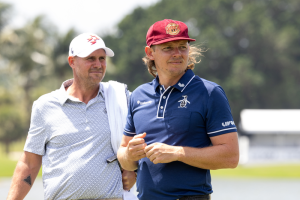
Justin Thomas +4000 (FanDuel)
With how he’s been playing since his 2022 PGA Championship win, you may be shocked to see the name “Justin Thomas” in this preview. However, JT has drifted to a place on the odds board where I believe it’s worth taking a shot on the talent of a two-time major champion in his prime.
It’s not all bad for Thomas this season. He finished T6 at the signature Pebble Beach event, T12 at the Waste Management Phoenix Open and T12 at the signature Arnold Palmer Invitational. In his last 24 rounds, JT ranks 8th in the field in Strokes Gained: Approach, 14th in Strokes Gained: Around the Green and 29th in Strokes Gained: Putting on fast Bentgrass greens.
Despite missing the cut last season, Thomas has played pretty well at Augusta National. He ranks 13th in Strokes Gained: Total in his past 36 rounds at the course. He finished T4 in 2020, T21 in 2021 and T8 in 2022.
I believe the 2024 edition of The Masters is completely wide open. The past few years has been frustrating for Thomas fans, but I believe his peak form may be a bit closer than people realize.
Sergio Garcia +12000 (FanDuel)
Earlier this season, Garcia dueled with Joaquin Niemann before finally losing on the fourth playoff hole late into the night. Despite the loss, the 44-year-old seemed to gain confidence in his game. The results that followed weren’t spectacular, but in terms of his ball striking he’s shown some flashes of vintage Sergio.
At LIV Miami last week, Garcia played well on a massive golf course, losing in a playoff to Dean Burmester. He continued pumped the ball into the fairway and hit massive iron shot after massive iron shot. He also used a refurbished Scotty Cameron that he used in the 1999 PGA Championship at Medinah. The putter served him incredibly well until he missed a short putt on the 18th hole to win the event. Overall, he gained 7.1 strokes putting at Doral.
Sergio Garcia is once again headed to Augusta National with a chip on his shoulder. Of course, having a chip on the shoulder is nothing new for the fiery Spaniard, but this year, the 2017 Masters Champion will arrive at Augusta with his game clicking on all cylinders.
Sergio winning a second green jacket is seemingly an almost impossible feat, but magical things tend to happen on the hallowed grounds of Augusta National.
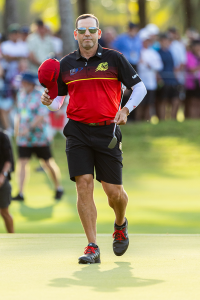
Adam Scott +11000 (FanDuel)
Betting Adam Scott over the past handful of years has been a Masters staple for me, and like many traditions, has been a hard one for me to let go of.
Last week, Scott finished T14 at the Valero Texas Open in a windy and difficult week. I believe the wind will be a major factor this week at Augusta National, and the more difficult the tournament plays, the more I favor Scott. Scott also ranks 5th in his past 24 rounds on Strokes Gained: Putting on Fast Bentgrass and has the short game these days that could help him contend in a major.
Since his win in 2013, Scott’s history at The Masters has been spotty. He has some poor finishes alongside a T9 in 2017 and a T18 in 2019. He’s been playing some solid golf this season, finishing T8 at the Waste Management Phoenix Open and T19 at the Genesis Invitational.
(All photos in piece belong to LIV Golf)
- LIKE20
- LEGIT17
- WOW6
- LOL0
- IDHT0
- FLOP4
- OB0
- SHANK10
Opinion & Analysis
The 22 players who can win the Masters
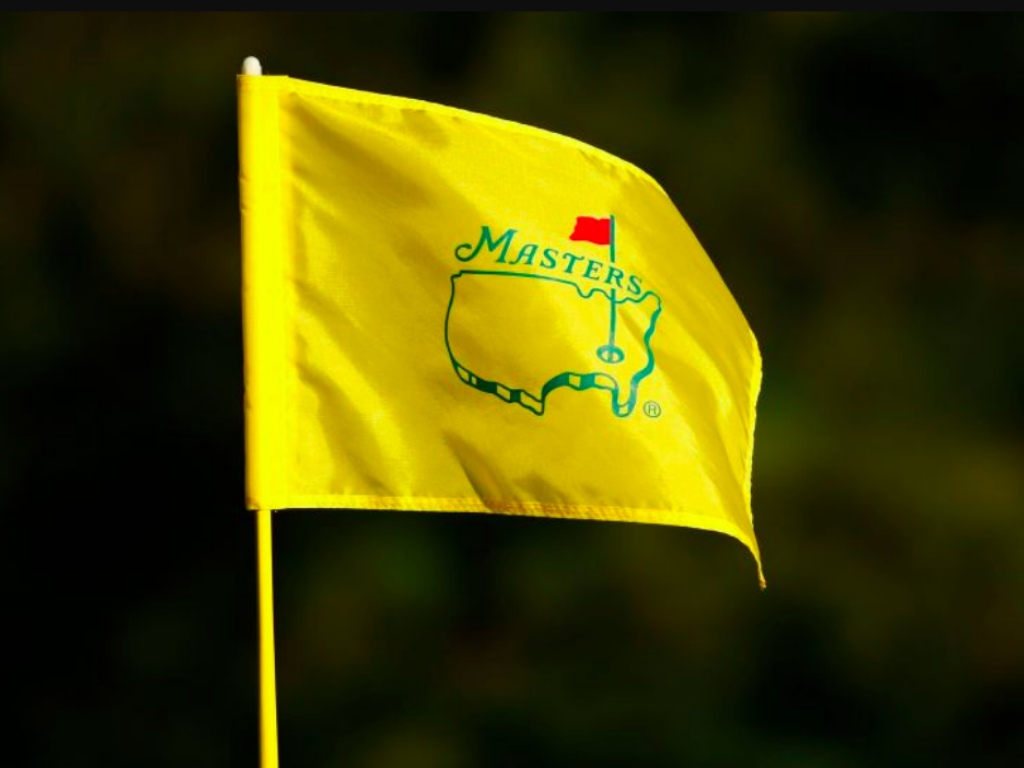
Since 2013, I have created a filtering process to help determine the players who are most likely to win the green jacket based on criteria that have strongly predictive outcomes to success at Augusta. The list of players that can win at Augusta is usually filtered down to 20-24 players and in that time I have correctly shortlisted every Masters champion.
This includes last year’s winner, Jon Rahm. Even though Rahm essentially walked away with the green jack and did not make it very close, there were some close calls on top of the leaderboard as I had filtered out Phil Mickelson (t-2nd) and Patrick Reed (t-4th) as the LIV Tour is still behind on providing advanced analytics for their tour. Russell Henley was also filtered out and finished t-4th, five strokes from Rahm’s winning score of 276.
If you’re watching at home, the “critical holes” that will likely determine the top finishers will be holes No. 7, 8, 11 and 13. The 11th hole is projected to be the most critical of holes as over the past five Masters the top players have gained nearly a 1.5 strokes for the tournament on that hole alone.
Just like last year’s column I will get the LIV Tour players I’ve filtered out of the way. Since LIV Tour does not provide ShotLink or Trackman data, it’s more of a guessing game as to how certain LIV Tour golfers are playing. I did utilize recent performance as well as performance at Mayakoba and Doral as they were two former PGA Tour courses that have some semblance of crossover to playing Augusta.
Phil Mickelson
Thorbjorn Olesen
Charl Schwartzel
Cameron Smith
Bubba Watson
Admittedly Cameron Smith and Phil Mickelson are hard to leave out, but both have not played well as of late.
Next, I filtered out the amateurs and all first-time professional attendees. The Masters has only been won three times by a first-time attendee: Fuzzy Zoeller was the last to win in 1979. Prior to Zoeller though, it was Horton Smith in the inaugural event in 1934 followed by Gene Sarazen in 1935
Ludvig Aberg
Akshay Bhatia
Wyndham Clark
Eric Cole
Santiago de la Fuente (a)
Nick Dunlap
Austin Eckroat
Stewart Hagestad (a)
Ryo Hisatsune
Lee Hodges
Nicolai Hojgaard
Stephan Jaeger
Jake Knapp
Christo Lamprecht (a)
Peter Malnati
Denny McCarthy
Grayson Murray
Matthieu Pavon
Adam Schenk
Neal Shipley (a)
Jasper Stubbs (a)
Out of the first time invitees the data likes Ludvig Aberg and Eric Cole to play the best at Augusta National.
I also filter out old Masters champions that I do not believe can get into contention anymore.
Fred Couples
Jose Maria Olazabal
Vijay Singh
Mike Weir
Tiger Woods
Recency has a strong predictive value for player performance and missing the cut in the event in the prior week greatly reduces the likelihood of winning the following week compared to players that miss the cut, take a week off, and then play the following week. Therefore I filter out all players that missed the cut at the Valero Texas Open last week.
Byeong Hun An
Harris English
Rickie Fowler
Ryan Fox
Zach Johnson
Tom Kim
Erik van Rooyen
Camilo Villegas
I will also filter out the players that have never made the cut at the Masters:
Kurt Kitayama
Adrian Meronk
A Tradition Unlike Any Other…
Augusta National has traditionally favored longer hitters and even moreso in the past 20 years of the event. Of course there has been exceptions as in 2007 the short hitting Zach Johnson ended up winning the event.
Critics of my filtering system point out Johnson’s victory as a case for short hitters being able to win at Augusta, but they neglect the fact that Johnson’s victory came in historically low temperatures in the 40’s with wind gusts reaching 35 mph. That made the par-5’s almost unreachable in two shots and the course stressed wedge play and short game around the green where Zach had a sizable advantage.
It is projected to rain early on Thursday and then the weather is supposed to be sunny and warm for the rest of the week. It depends on how quickly the course dries up, but if it does dry out fairly quickly that will give the longer hitters the advantage as they will be able to reach certain par-5’s in two shots that the shorter hitters cannot reach if they don’t hit a quality tee shot and there may be par-5’s that some of the long hitters can reach in two shots with a short iron. Therefore I will filter out the following players due to a lack of distance off the tee:
Corey Conners
Lucas Glover
Emiliano Grillo
Brian Harman
Si Woo Kim
Chris Kirk
Shane Lowry
Colin Morikawa
JT Poston
Justin Rose
Sepp Straka
Out of these players the data likes Lowry and Morikawa the most. Both have good history at Augusta and they both just narrowly missed the distance benchmark set in the filter and both are excellent long iron players.
Last year I created a new formula to better determine ball height as Augusta has historically not taken too kindly to a low ball flight. Out of the 5 players filtered out for low ball flight using the new formula the best finish was only t-29th by Si Woo Kim. This year I’ve filtered out the following players.
Matthew Fitzpatrick
Sungjae Im
Luke List
Joaquin Niemann
Justin Thomas
Every year I filter out the poor performers on approach shots from 175-225 yards as Augusta National puts a lot of stress on those shots. Last year I filtered out nine players and three of them missed the cut with only Jordan Spieth finishing in the top-15 (t-4th) as the rest of the players were never a threat.
Here are the golfers I’m filtering out due to poor play from 175-225 yards:
Patrick Cantlay
Cameron Davis
Jason Day
Tommy Fleetwood
Russell Henley
Max Homa
Rory McIlroy
Jordan Spieth
Nick Taylor
Rory had a nice outing at the Valero Texas Open and hit his irons better there, but appears to be struggling with a leftward miss. Other than that, Rory still has the game to win his first green jacket. Henley is usually one of the better iron players on Tour, but he has struggled this season from 175-225 yards and is a short hitter anyway.
I will also filter out Danny Willett as he is coming off injury and making his comeback at the Masters.
That leaves the 22 players that can win the Masters:
Keegan Bradley (150/1)
Sam Burns (60/1)
Bryson DeChambeau (25/1)
Tony Finau (50/1)
Sergio Garcia (100/1)
Adam Hadwin (175/1)
Tyrrell Hatton (80/1)
Viktor Hovland (35/1)
Dustin Johnson (40/1)
Brooks Koepka (16/1)
Min Woo Lee (70/1)
Hideki Matsuyama (20/1)
Taylor Moore (300/1)
Jon Rahm (12/1)
Patrick Reed (80/1)
Xander Schauffele (18/1)
Scottie Scheffler (4/1)
Adam Scott (100/1)
Sahith Theegala (50/1)
Gary Woodland (250/1)
Cameron Young (50/1)
Will Zalatoris (35/1)
Here’s my personal top-10 picks:
Keegan Bradley (150/1)
Sam Burns (60/1)
Bryson DeChambeau (35/1)
Tony Finau (50/1)
Viktor Hovland (35/1)
Dustin Johnson (40/1)
Hideki Matsuyama (20/1)
Jon Rahm (12/1)
Xander Schauffele (18/1)
Scottie Scheffler (4/1)
- LIKE73
- LEGIT35
- WOW10
- LOL13
- IDHT2
- FLOP3
- OB3
- SHANK29
News
7 PGA TOUR courses you need to play

Golf is a unique sport in that you can play where the pros play and make golf history of your own. Nothing in golf can compare to playing a world-renowned course and following in the footsteps of the game’s best golfers. The feeling is incomparable, and it’s one we think more golfers should experience!
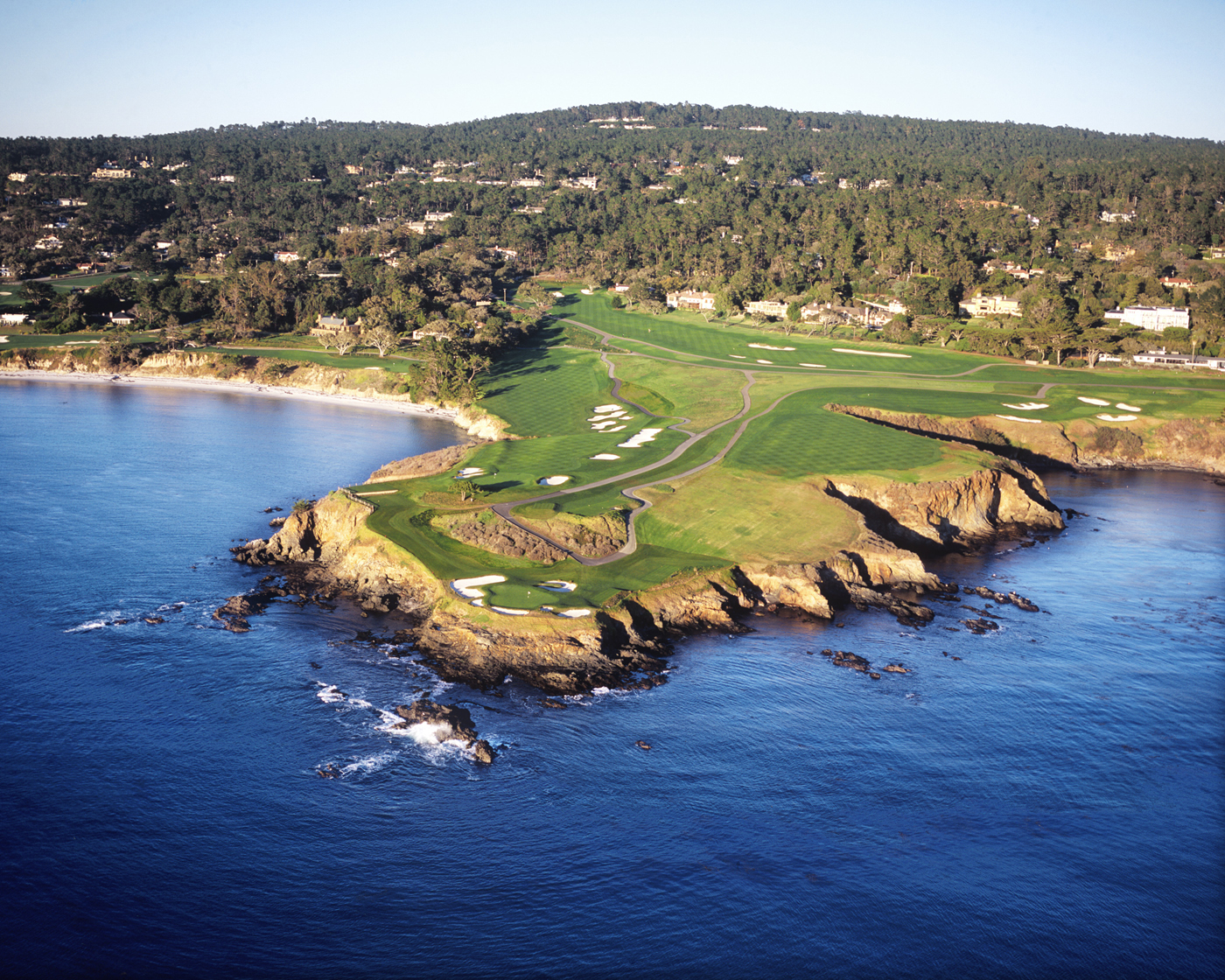
To get you started, here are our picks of the best PGA TOUR courses you can (and should!) play:
PGA Tour courses you can (and should) play
- Pebble Beach
- TPC Sawgrass – Stadium Course
- Arnold Palmer’s Bay Hill
- Torrey Pines – South
- Harbour Town
- PGA National – Champion
- Innisbrook Resort – Copperhead
Pebble Beach Golf Links (AT&T Pro-Am, U.S. Open, PGA Championship)
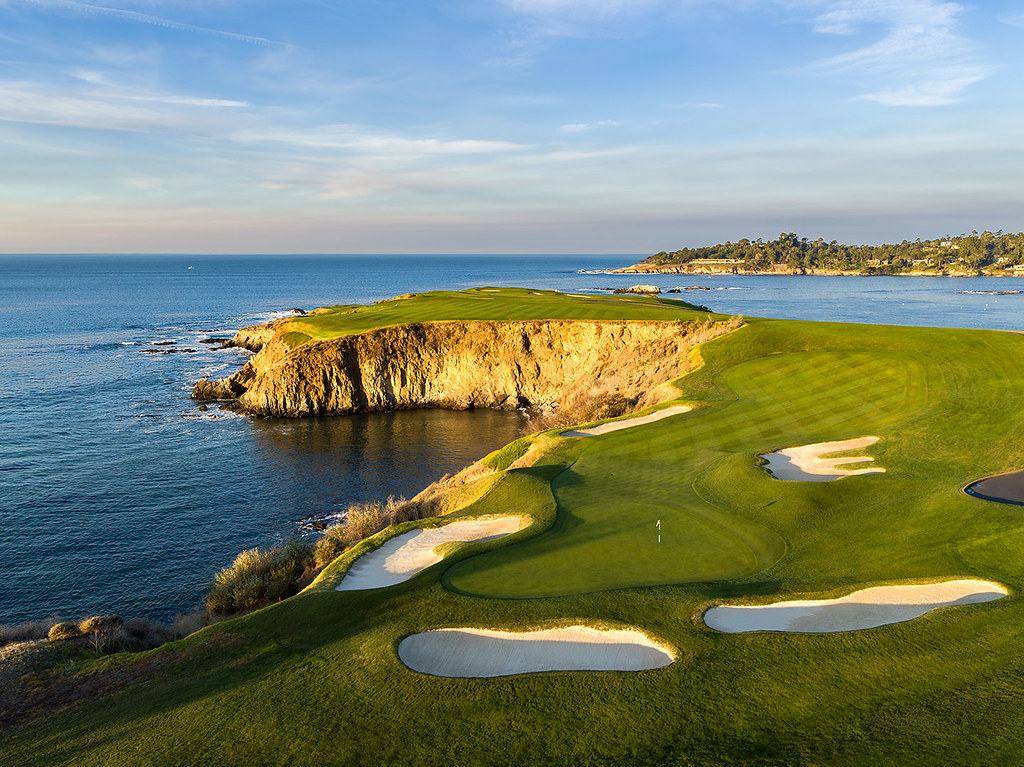
Early morning light on the par-4 8th hole at Pebble Beach Golf Links on the Monterey Peninsula.
One of the most recognizable golf courses in the world, Pebble Beach Golf Links is the definition of a bucket golf course. Golfers will play iconic holes like the par-3 7th to the stunning par-5 18th. Enjoy great views of the Pacific Ocean as you play amongst the clifftop fairways and make memories that will last a lifetime when you play this PGA TOUR and major championship course.
TPC Sawgrass – Stadium Course (THE PLAYERS Championship)
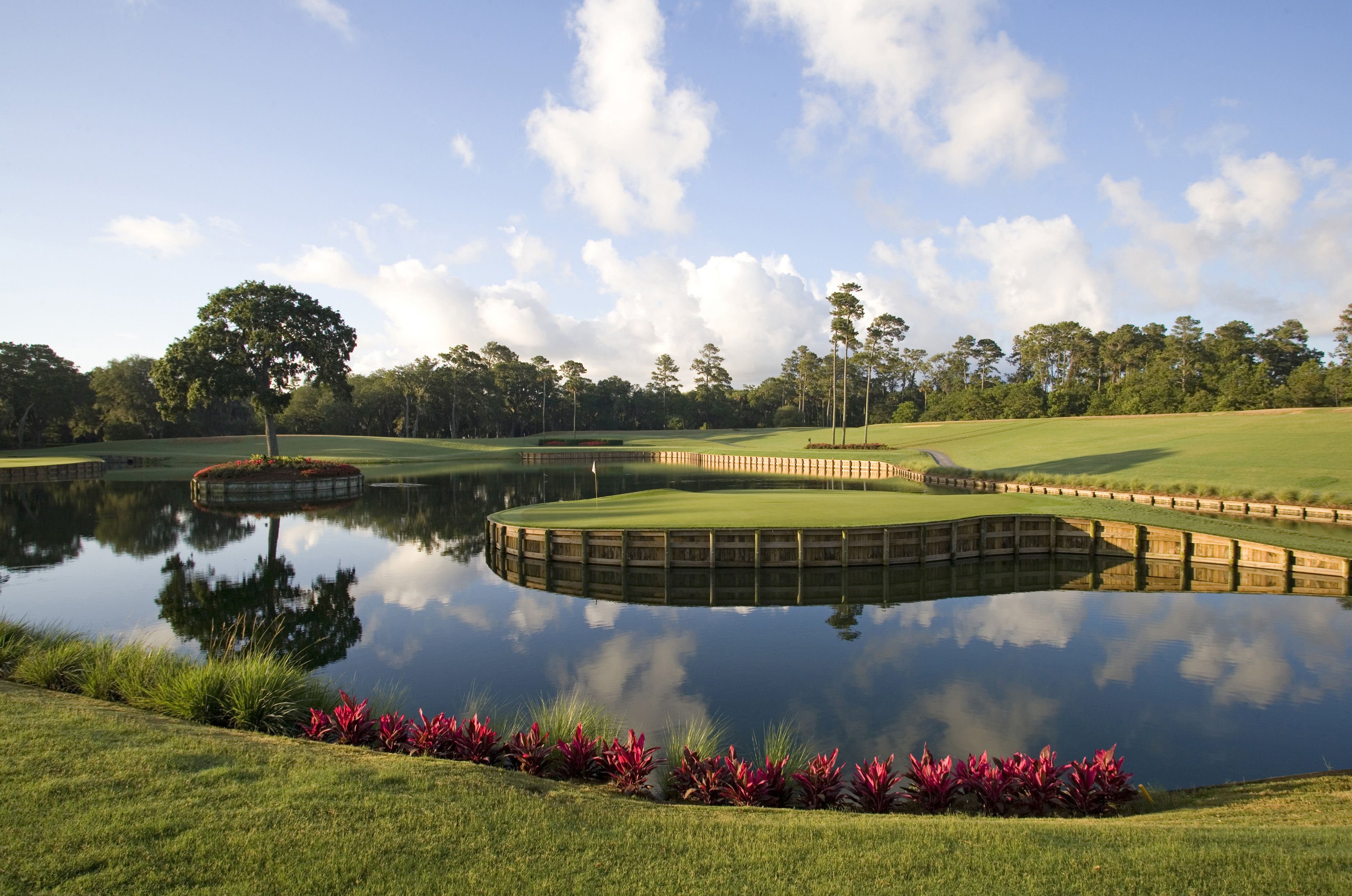
The 17th hole of THE PLAYERS Stadium Course at the TPC Sawgrass in Ponte Vedra Beach, FL Photo by: Chris Condon/PGA TOUR (Photo by Chris Condon/PGA)
Home to arguably the most famous par 3 in golf, the Stadium Course at TPC Sawgrass is a top bucket-list course designed by Pete and Alice Dye. A challenging layout awaits that will test all facets of your game, especially shot shaping and course management. Subtle elevation changes, undulating greens, and unique bunkering add a degree of difficulty that stump even the best players in the world. Not to mention one of the best finishing stretches in golf with the long par-5 16th, the iconic 17th hole island green, and the testy par-4 18th.
Arnold Palmer’s Bay Hill (Arnold Palmer Invitational)
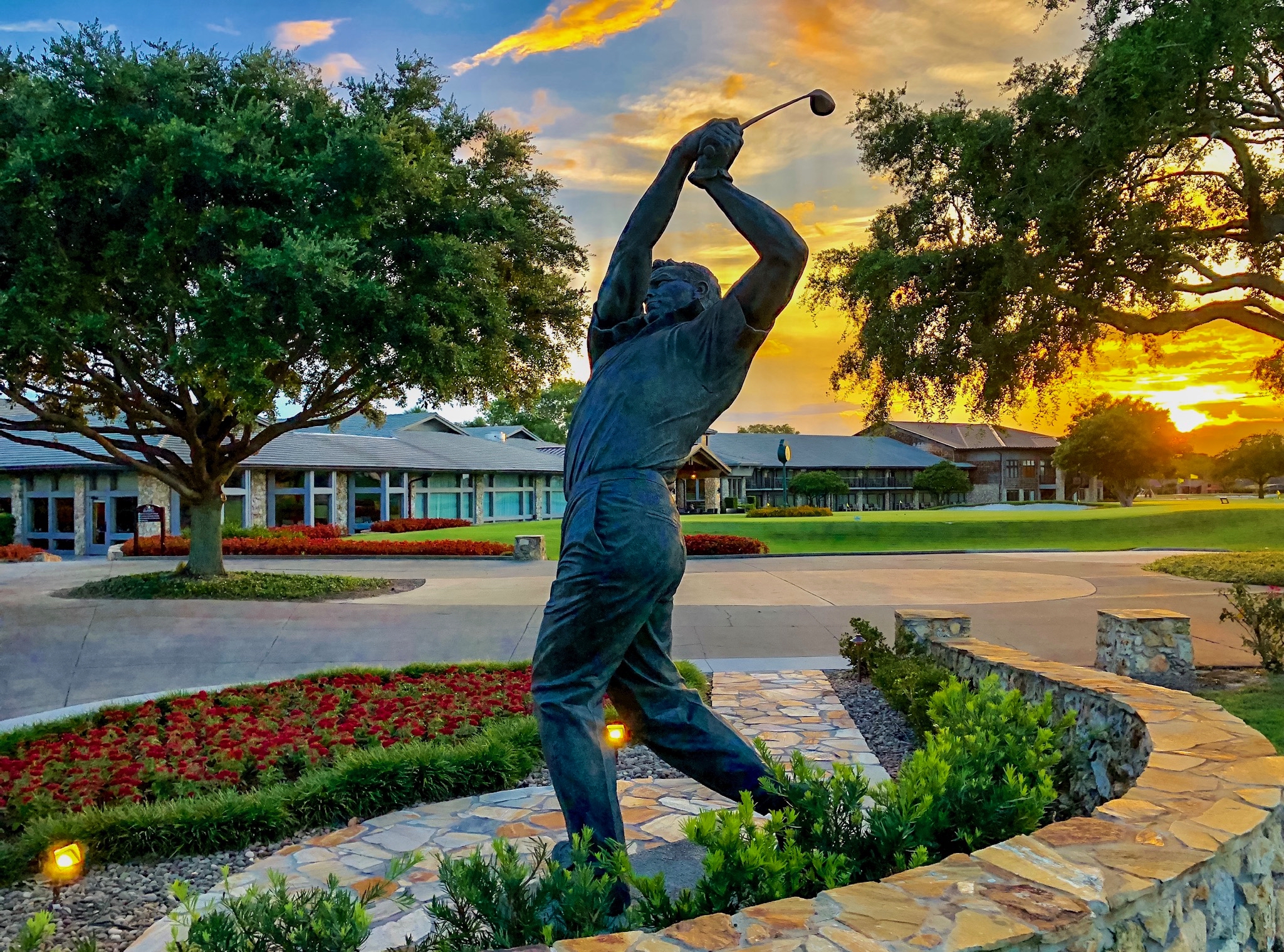
A course fit for “The King” is what you will experience when you visit Orlando and play Bay Hill’s Championship Course. This classic Florida layout offers generous landing areas off the tee with few trees, but bunkers guard the greens and large ponds will make you rethink your shot choices. The course is only available for members and guests staying at The Lodge, so a stay is required to play this stunning course. But with year-round sunshine and pristine course conditions, it is never a bad time to visit Bay Hill!
Torrey Pines – South (Farmers Insurance Open, U.S. Open)
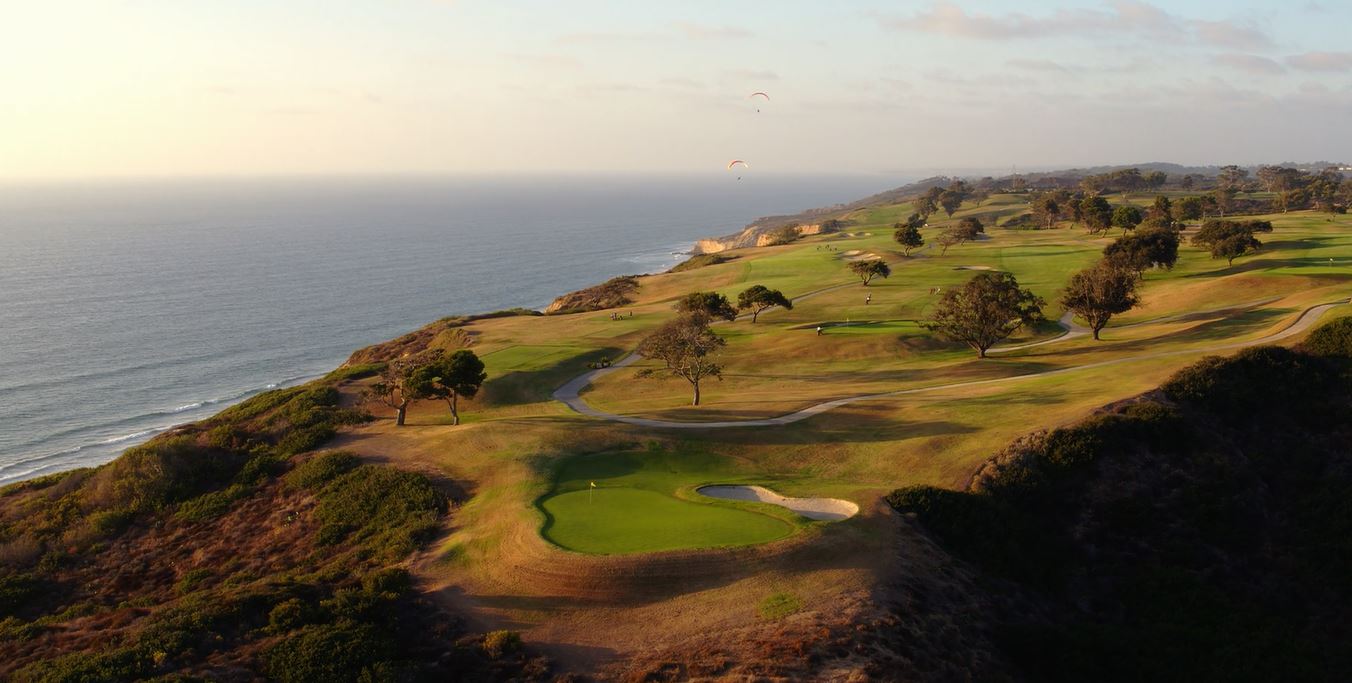
Another California clifftop course that should be on your bucket list is the South Course at Torrey Pines. Located just north of San Diego, this annual PGA TOUR stop has also hosted two U.S. Opens, which adds to the allure of the property. Narrow fairways and tall rough combined with amazing views of the Pacific Ocean and the California coastline make for an unforgettable round of golf. Large bunkers and elevation changes add to the challenge of the course, but the moderately sized greens offer golfers some respite. Who would’ve thought that a municipal course could be so exciting?

Hole 18 Harbour Town
Most recognized by the famous red and white striped lighthouse behind the 18th green, Harbour Town is the brainchild of Pete Dye and Jack Nicklaus on Hilton Head Island, South Carolina. While the course is relatively short for a PGA TOUR event, the challenging design offsets length for accuracy with the narrow fairways framed by overhanging trees making it a shot makers course. A majority of the course winds through the wooded and sandy terrain before looping back towards the coastline with the final two finishing holes playing along the water.
PGA National – Champion Course (Honda Classic, Ryder Cup, PGA Championship)
With the prominent golf tournaments this course has held, it is hard to leave it off the list. A fantastic Jack Nicklaus design, the Champions Course at PGA National is also home to a famous stretch of golf holes called “The Bear Trap.” The fairways and greens are player-friendly while the bunkers and water hazards are the course’s biggest defense. You will enjoy a 5-star experience and feel like a professional when you visit PGA National’s Champion Course.
Innisbrook Resort – Copperhead Course (Valspar Championship)
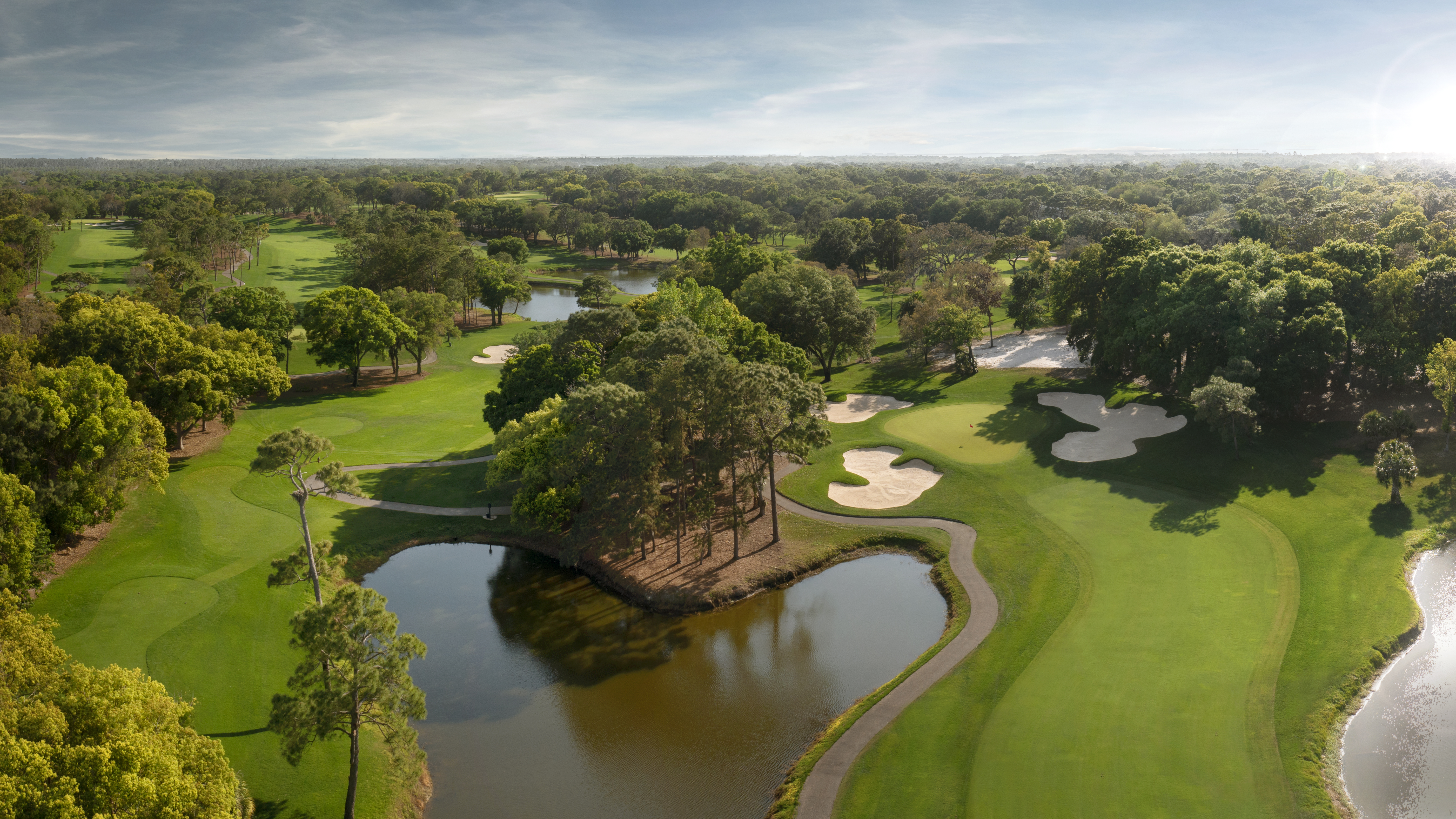
At more than 7,200 yards the Copperhead Course is the most recognizable of Innisbrook’s four Tampa, Florida courses and plays host to the PGA TOUR’s Valspar Championship.
One of the more under-the-radar courses on Tour, the Copperhead Course at Innisbrook Resort still offers a challenge even to the pros. Designed by Lawrence Packard, the course, while not heavily wooded, requires accuracy with tight fairways, strategically placed bunkers, especially around the greens, and a decent amount of water hazards that come into play. As you head towards the clubhouse, you will encounter “The Snake Pit;” a collection of the most difficult finishing holes on the PGA TOUR.
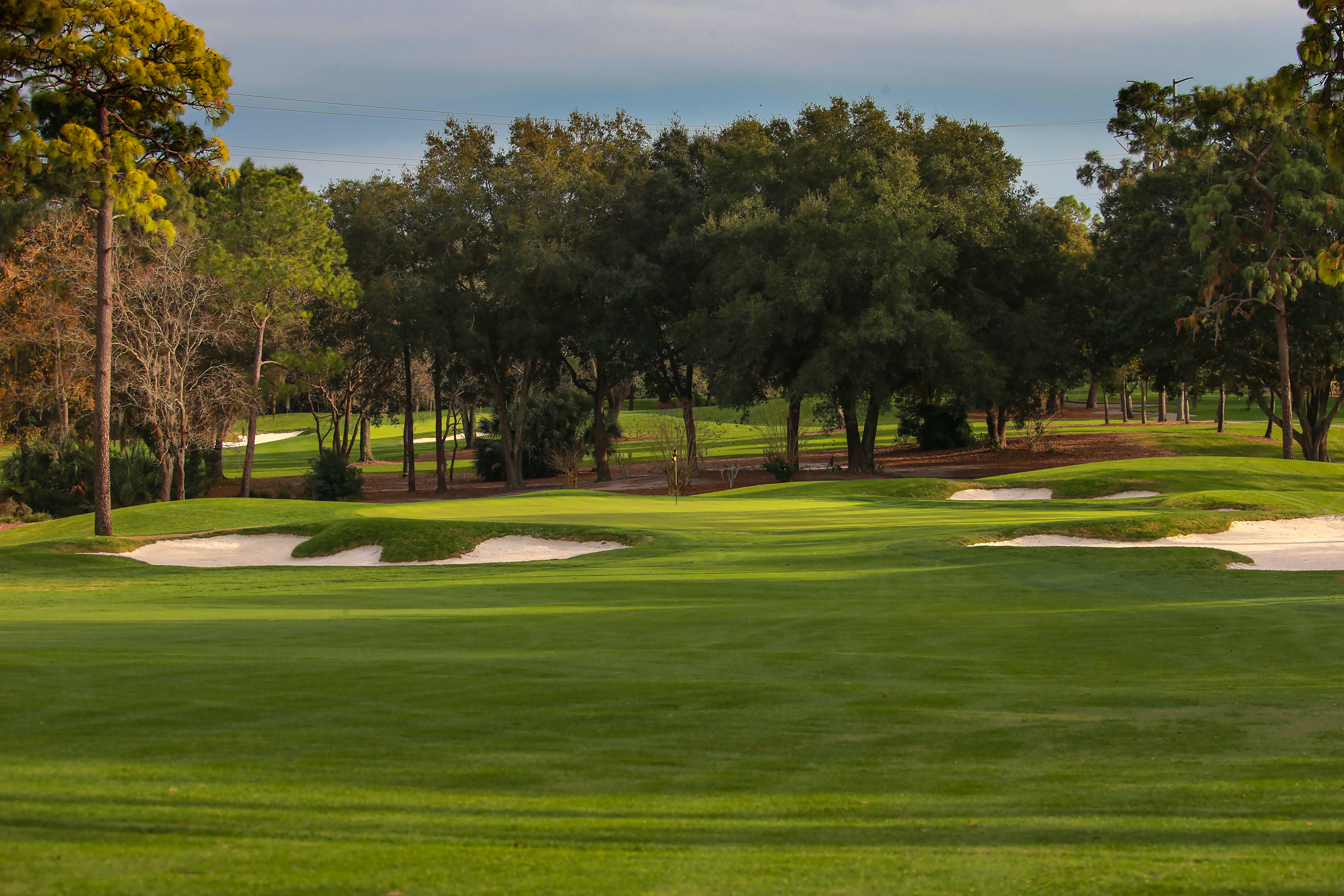
There you have it, GolfWRXers. Have you played any of these PGA TOUR tracks? What was your experience? Let us know in the comments.
Editor’s note: This article is presented in partnership with Golfbreaks. When you make a purchase through links in this article, GolfWRX may earn an affiliate commission.
- LIKE7
- LEGIT2
- WOW0
- LOL1
- IDHT0
- FLOP0
- OB0
- SHANK1
-

 19th Hole2 weeks ago
19th Hole2 weeks agoJohn Daly stuns fans into silence with brutal opening tee shot on PGA Tour Champions
-

 19th Hole1 week ago
19th Hole1 week agoThings got heated at the Houston Open between Tony Finau and Alejandro Tosti. Here’s why
-

 19th Hole5 days ago
19th Hole5 days agoReport: Tiger Woods has ‘eliminated sex’ in preparation for the 2024 Masters
-

 19th Hole3 weeks ago
19th Hole3 weeks ago2-time major champ announces shock retirement from the sport at age of 33
-

 19th Hole3 weeks ago
19th Hole3 weeks agoEdoardo Molinari reveals the latest PGA Tour golfer to turn down ‘good offer’ from LIV Golf
-

 19th Hole2 weeks ago
19th Hole2 weeks agoCharlie Woods finds it tough going on American Junior Golf Association debut
-

 19th Hole7 days ago
19th Hole7 days agoAddiction, spinal fusion, and scam artists – Everything Anthony Kim revealed in candid interview with David Feherty
-

 19th Hole3 weeks ago
19th Hole3 weeks agoJon Rahm dealt fresh blow to hopes of qualifying for 2025 Ryder Cup











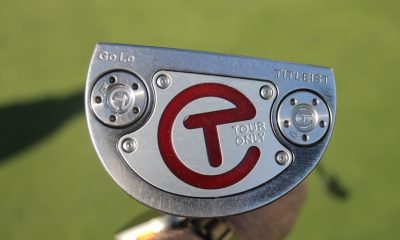



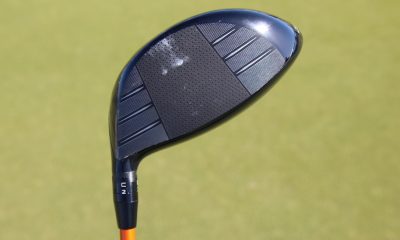



Paul
Mar 29, 2018 at 3:21 pm
Maybe this is a dumb question, but why can’t we let the pros just shoot lower scores?
Tom Newsted
Mar 29, 2018 at 8:13 am
This has been covered by so many people across the internet who have done testing with balls from today and balls from 20 – 25 years ago. I say put them on the robots and see if there is any major difference 20-30 yards is a major difference. If the robots are close then there is no reason to change the ball. I have said many times that this issue is the result of the players being in much better shape than ever before. Both PGA and LPGA players are extremely fit and have a physical trainer as part of their game. This along with some technology is why the ball is going further not the ball itself. When Tiger came on the scene in 97 he was the only one that took physical fitness seriously now all the kids that grew up wanting to be Tiger have done the same thing.
glfhsslr
Mar 29, 2018 at 6:36 am
MLB uses wooden bats yes. Ask some of the MLB pitchers of their opinion of the ball, They’ll all tell its juiced.
If the USGA decides to roll the ball back I think they should expand the hole to 6″ wide lol. Id make that exchange all day
Square
Mar 29, 2018 at 5:54 am
Every single decision should be based on how to make the game more fun, affordable, and optimum pace for amateur players. There should be no consideration as to what Tour Players are doing. Rolling back the ball for amateurs will not grow the game. I hit the ball 280 off the tee 25 years ago. At age 48 I still hit it 280 off the tee. Technology has allowed me to enjoy nearly the same experience for 25 years. If I was hitting it 240, I’d probably have slowed down a bit and picked up other interests.
gvogelsang
Mar 29, 2018 at 8:37 am
Why would you want the game to be easier. A big part of what makes golf a great game is the difficulty.
If you need easier, move up a set of tees, or two.
ewfnick
Mar 29, 2018 at 5:14 am
I have stopped watching golf on TV these days as it is simply boring, driver, wedge, driver, wedge, all that gets shown most of the time is putting, as the approach game has become too obvious.
I will continue to love and play the game, but watching for me, is now a thing of the past.
A. Commoner
Mar 28, 2018 at 10:06 pm
Don’t care what the PGA, Tour, USGA, or R&A does. There will be makers of and markets for balls appropriate for 90% of us “real” golfers. Just an aside: some people have strange ideas about how to “grow the game.”
KP
Mar 28, 2018 at 8:03 pm
Been playing since 1993. Busted my a** trying to hit it longer any straighter. Down to a 3 now, was a scratch about 10 years ago. I practice a few times a week and play on one or both weekend days. My handicap climbed when they got rid of belly putters. If they roll the ball back because the beasts that are the PGA Tour are hitting it further than they like and I start hitting it noticeably shorter…I’m done.
Hogan Fan
Mar 29, 2018 at 4:52 am
In all seriousness, the article compared golf to baseball and the analogy is correct. Do we rebuild all the stadiums or just make the ball go shorter? If they make it a bit shorter to control the costs of course maintenance, then everyone should just move up a proportionate amount. 10% rollback? Stop playing 7000 yards and go back to playing 6300. There are a ton of great courses under 6500 yards.
Mat
Mar 30, 2018 at 4:32 am
No, MLB also requires all parks to be 330 to the poles now, and 400 CF. So you can’t go saying “play a shorter course”, and say baseball is an example. It’s opposite. They are ensuring the “course” is a minimum distance.
Mat
Mar 28, 2018 at 7:59 pm
Frankly, there’s only one thing I care about. Whatever is decided in the area of the ball, and equipment in its entirety, is simple; it must remain equal, pros and amateurs.
If it’s reduced for the pros, it’s reduced for the ams. We all play conforming clubs, and the ball should be no different. If they do or don’t change, what I care about is that the ball is the same one that the professionals play. Right now, they play the same ball I can buy off the shelf. If that ever changes, you’ll find that golf will suffer. It is the fact that pros play the SAME as me that makes what they do amazing. Otherwise, I don’t have anything to compare them, and that’s when you lose the connection so vital in the game.
Golfer 5
Mar 28, 2018 at 6:59 pm
After reading a lot of comments it is a variety of factors in my opinion which has increased distance:
-Player fitness
-Faster conditions
-New technology
One thing that I think has really increased distance across the board is club fitting, even for pros. That in itself is so much more detailed and technologically advanced now it is crazy! The intricacies pros can maximize on are only going to increase their production further. If you combine all those factors and add in the fact that any golfer has a chance to play the most perfectly tailored set of clubs, then you are obviously going to maximize performance.
In that respect, perhaps they should regulate the COR standard of woods further, and put parameters on fairway woods as well.
Charles Miller
Mar 29, 2018 at 9:25 am
That is the critical point. Just publishing distance stats takes no account of clubhead speed. A recent analysis of the top 20 on the US PGA tour showed a 4mph (which translates to c.10 yard) improvement over a decade, so better heads and shafts, stronger players and perhaps a more aggressive approach all play their part. Given that the USGA and R&A have not changed the maximum permitted ball velocity for ages, other factors come into play.
One of those is the performance of today’s golf balls. Optimising spin, and fitting balls to players, means they nowadays fly better and more predictably (regardless of distance) than they did.
Bob
Mar 28, 2018 at 6:32 pm
I don’t see what the problem is. The game is fun and exciting to play as an amateur and it is fun and exciting to watch the pro’s play. Roll back the ball and you roll back the fun and excitement and you end up rolling back the growth of the game. Sorry, I think the USGA and the R&A are a bunch of old fuddy duddies
Bob Jones
Mar 28, 2018 at 6:13 pm
The problem, if there really is one, exists only in professional golf only. I don’t think my 220-yard drives are hurting the game.
And where is Group 5? A set of recreational golfers, who represent only about 95% of people who play the game?
Moe Selchen
Mar 28, 2018 at 6:54 pm
Exactly
Billable Hours
Mar 28, 2018 at 5:42 pm
I don’t understand why anything needs to change
Vance
Mar 28, 2018 at 5:39 pm
No course is obsolete. They will always be free to have tournaments at any course. They are only afraid of scores being too low, but won’t admit it. The same people who readily admit that players are better these days seem unable to accept that scores might be lower as a result.
gvogelsang
Mar 28, 2018 at 5:22 pm
They should roll back COR and reduce the driver head size for “elite” players. They have already defined elite players when they changed the groove rule.
A COR of .76 and a driver head size of 200 cc would work just fine.
R Symes
Mar 28, 2018 at 5:00 pm
I believe the Ball is going further due to a combination of inputs as mentioned by multiple people, course conditions, Ball technology improvements, club technology improvements, physical fitness. I do not see it as an issue as all play in the same environment with the aim to get the ball in the hole with the least number of strokes.
Why not conduct some analysis with the top ten players mixing up combinations of current balls/clubs and balls/clubs from 20 to 30 years ago! How far does the modern club hit the old ball and vice versa?
Get on with the game and let everyone enjoy it.
Golf fan 55
Mar 28, 2018 at 4:21 pm
I am an advocate of keeping the golf ball the same, and agree with Dustin Johnson being that the object “is getting it into the hole”. Why I wouldn’t compare golf equipment to baseball equipment.
1. The only reason aluminum is used everywhere but professional baseball is because of availability of wood and cost for amateurs to use wood.
2. Tiger’s comparison about the “Pro” baseball and “Amateur” baseball is exactly what is wrong with pro baseball right now, and why homeruns have become such a joke and how hard pitchers are throwing. There is a very distinct difference in how tightly wound the “Pro” baseball is and the height of the seams compared to a “Minor League” ball compared to a college/high school ball, thus creating less resistance in the wind. It is simply a money-maker for the sport of baseball.
I agree with all those who have said that the conditions of the course should change!!! The pros on average seem to be getting 20-30yds of roll-out on drives due to how fast, tight and firm the fairways are. And if putting greens are way faster today than when Arnie, Nicklaus, etc used to play, aren’t the fairways as well??? How is this not flawing the numbers as well? All in all, I do not think overall carry distance is much different through the years.
Golf fan 55
Mar 28, 2018 at 4:24 pm
I do not think pros needs to play on fairways that run 9-11 on a stimpmeter, which is faster than some of the greens most of us play on. And of course, something that runs that fast will also be more firm allowing the ball to roll more, thus distance+
Golf fan 55
Mar 28, 2018 at 4:35 pm
In my opinion, Golf is the only sport where the playing conditions are significantly different considering professional play vs “ordinary” conditions amateur conditions. Perhaps the pristine conditions of the courses need to be addressed as the conditions are contributing to distance gain.
dat
Mar 28, 2018 at 3:35 pm
Make the courses play harder. Or force all pros to play steel shafts over 100g in their woods. That will slow things down and force a decrease in length.
Dave
Mar 28, 2018 at 3:24 pm
as soon as they make anything different than i use. i will lose substantial interest in golf. i spend about 10k annually on golf. no longer will their 340 drive seem amazing as it will only be 300yards…i will be hitting 300 yards and so will DJ. STUPID. not every course needs to be tourney playable. its only those courses that need length and they only need that length for tourneys. no one is even playing the tips at any courses i play. half the time the tips are grown over. Just narrow the damn fairways and you will see more irons off the tee, hybrids etc. problem solved…
Rick Wilmoth
Mar 28, 2018 at 3:18 pm
We know its about the money, not the integrity of the game. However, to fix it is pretty simple. Same reasoning behind the baseball rules. Amateurs can use whatever they want, but the pros have to hit a standardized ball and use wood woods.
AndyK
Mar 28, 2018 at 1:48 pm
For what it’s worth
Top 10 players in World and swing speed (Fleetwood sub for Koepka, no keopka 2018 data)
1 D Johnson 121.6
2 J Thomas 117.7
3 J Rahm 118.4
4 J Speith 113.1
5 J Rose 117.7
6 H Matsuy 118.4
7 R McIIroy 122.4
8 R Fowler 115.2
9 S Garcia 119.0
11 Fleetw 116.7
Peeza
Mar 28, 2018 at 1:42 pm
Since the MLB seems to be the most common comparison, maybe the Tour courses should be made tougher like the MLB parks are made larger. High school and college baseball fields don’t measure up to MLB parks. Make the fairways narrower and softer, while making the rough longer and greens smaller.
99% of amateur golfers don’t play the courses the pro’s play. Change the pro’s courses and leave the am’s alone. Equipment remains the same.
Chuck
Mar 28, 2018 at 3:07 pm
We have been doing that — tricking up golf courses — for many years, and it is long since time to stop it. It does not produce the best golf. And it isn’t just doing tricky stuff in setups. We are changing golf courses — lengthening them, stretching them, changing them — all to accommodate $3.50 golf balls.
Ridiculous.
GolfGolfGolf
Mar 28, 2018 at 1:39 pm
simple – no
farmer
Mar 28, 2018 at 1:38 pm
1980 is damn near 40 years ago. How much longer were tour players in 1980 than in 1940? Did that 1980 ball need to be rolled back?
Chuck
Mar 28, 2018 at 3:11 pm
You are helping to make the rollback argument.
The differences between clubs and balls in the 1940-1980 period was negligible, to the 1980-2020 differences.
In 1940, as in 1980, all clubs were steel-shafted. Drivers were persimmon. Clublengths and lofts were mostly the same. In the 1970’s, a great many tour players were still playing with collectible MacGregor Tommy Armour drivers that were made in the 1950’s and 60’s.
Peeza
Mar 28, 2018 at 1:32 pm
At what playing level does the USGA make it mandatory to use a reduced flight ball(if they go that route). What does this do for guys on the Web.com Tour or college players aspiring to be pro?
The USGA will have to define a threshold where players competing at a certain level will have time to adjust.
A college player deciding to go pro will be at a serious disadvantage when they tee it up on a mini tour or the Web.com tour with a reduced flight golf ball. They will need time to adjust to their new yardages and the new ball’s characteristics.
Someone else already mentioned this but what will this do for the amateur that qualifies for a pro tournament? They’ll have to use a ball they haven’t used before or have very little practice with.
Also, will there now have to be another division for amateur tournaments for amateurs that want to use pro compliant equipment?
Too many variables for the roll back case IMO.
CB
Mar 28, 2018 at 1:26 pm
A semi-scientific thought…
A pro who achieves a very efficient contact may lose 20% with a new-tech ball. BUT an amateur with less efficient ball striking would lose a much lower % of their distance – maybe only 5%, because so many other factory are at play.
I think a ball which bunches the driving distances could be good – only the best longest pros getting to 300yds whilst the club players who get about 230 or so at the moment will be less effected an come out of this with 220 or 225yd drives.
Peeza
Mar 28, 2018 at 1:17 pm
Just for the record…MLB baseball is not the only league that uses wooden bats. Some Division II College baseball conferences use wooden bats. Like, the NE10 in New England.
Sorry to burst anyone’s bubble. Well, not sorry really.
Scooter
Mar 28, 2018 at 12:10 pm
The problem is that the courses are set up to reward longer hitters. The setup for tournaments should allow for long drives up to a pre-determined threshold. At that point, distance gets penalized with hazards, bunkers, long rough, etc.
Face it. Golf courses can’t continue to be made longer and longer. PGA tournament setups are rewarding only the bomb and gouge players by making the courses play longer and eliminating the shotmakers on tour. Give the long hitters 3-5 holes that reward their distance and setup the rest to level the field off the tee.
Scott
Mar 28, 2018 at 1:18 pm
(Scooter) And then make the cups smaller for better putters. Why penalize a player that can do something you can’t?
AndyK
Mar 28, 2018 at 1:31 pm
Haha seriously this is so true. That’s the real reason PGA guys light up course When they hit 15 greens and have 24 putts they is just insane.
That is much harder then hit the ball 300. I know plenty of guys shoot in 90s that hit it 300+
Dino
Mar 28, 2018 at 12:07 pm
Rod … you missed the group of players that are content with the golf ball and the distance issue. I suspect that there are plenty of players that would like to see it stay right where it is, but for some reason they never get the “ink” or “airtime” to make their perspective more clearly known.
nyguy
Mar 28, 2018 at 12:06 pm
on and on and on and on…. my god.
HeineyLite
Mar 28, 2018 at 12:04 pm
Going to the baseball comparison, make all pros play blades and and smaller than 360cc drivers. Maybe limit clubs they can carry from 14 to 11? IMO
ChiliDip
Mar 28, 2018 at 12:06 pm
True tour issue clubs now!!! Not a bad thought. But nothing will change.
Bob Jones
Mar 28, 2018 at 6:17 pm
Have you been peeking in my bag?
kevin
Mar 28, 2018 at 11:53 am
the real issue is when course strategy is removed because of the distance guys can carry it. i’m all for thicker rough and tighter fairways, but if guys now have ability to carry the hazard, carry the fairway bunker, cut the dogleg, and essentially eliminate the risk and reward the course architect spent so much time creating, then the game changes for the worse.
combine this with the forgiveness in the large driver heads and lack of spin with the new balls, and the separation or gap between the best ball strikers is narrowed. I want a bigger emphasis on ball striking as the deciding factor on tournament success vs what the game is quickly becoming…which is workout, perfect your launch angle to hit driver as high and far as possible, and become a good putter. course management, iron play, working the ball is taking a back seat to the bomb and gouge type of play. not sure that’s great for the game.
Humble Golfer
Mar 28, 2018 at 11:25 am
I think that we can use MLB as an example. Professional baseball are the only ones that use wooden bats. If they do pull the trigger on this, they should only reduce ball distance on Tour golf balls not consumer based balls. Just like golf clubs; pros use equipment that amateurs can’t get. Should be the same for the golf ball.
Allan
Mar 28, 2018 at 12:02 pm
Its hard to use MLB as an example. you don’t see true amateurs playing in the MLB. There are many Professional golf Tournaments that allow Amateur players to compete (IE Masters, US Open, British Open…the list goes on). So if Pros and Amateur are using different equipment, How cab they level the field? Only way would be to force Amateur to use Limited golf ball which is not what they’ve practiced with or play with on a regular basis, so the are at an immediate disadvantage.
HoleIn2
Mar 28, 2018 at 12:10 pm
What happens to top amateurs, top juniors, club championships, state, and national tournaments? Where do you draw the line.
Den
Mar 28, 2018 at 11:17 pm
You can’t draw the line because a line can’t exist…. would they take away the u.s. am champs invitation to the masters or u.s. open because they used the “amateur” ball instead of the regulated tour ball to qualify? it just wouldn’t work with two sets of rules. you’d have to do it for everyone…. and a 20% rollback would mean a 300yd drive would only go 240. so no recreational golfer could legitimately hit the ball 200yds basically. sounds like a great idea
Man
Mar 28, 2018 at 11:15 am
They should stop cutting the fairways so thin and running them out so firm on the Tour courses and let them get shaggy and clumped with crab grass like they are on many real, muni courses across the US. And then let’s see how the Pros do on courses that aren’t so perfect where the ball doesn’t roll out 50 yards
BH
Mar 28, 2018 at 11:54 am
Yup. The ball is NOT the problem.
AndyK
Mar 28, 2018 at 1:50 pm
TV wants low scores on long drives. Notice how they always but these shot tracer driving distance hole on a hole that’s off a cliff down hurricane with lava rock fairway.
All the pros care is how far they carry the driver and only a few can carry it 300.
Sam
Mar 28, 2018 at 11:03 am
Of course longer hitters on tour like Tiger and DJ want the ball rolled back. When they(longer hitters) are now hitting short irons and wedges into greens where other guys are hitting mid irons, roll the ball back and now the big hitters are still hitting short irons to mid irons to the greens the short guys are forced to hit long irons. Who’s going to have the advantage of getting the ball to stop close to the pins on the these fast greens? Yup the big guys.
Rev G
Mar 28, 2018 at 10:59 am
I think there is another perspective that you’re missing. Player’s on the tours hit it further for many reasons (clubs, balls, fitness, nutrition, instruction, course conditions, etc.) The ball is the easiest and most logical thing to roll back to counteract this. Saying the ball is at fault for the increase is not the point, the point is that the ball (and only reasonable) thing you can roll back. Tennis has encountered the same issues – the ball was traveling too fast because of new racquet technology, fitness, nutrition instruction, etc.). So what have tournaments done to counteract, they’ve made the ball fluffier. The ball wasn’t at fault, but it is the easiest thing to use to counteract.
Matt
Mar 28, 2018 at 2:11 pm
If fitness is the reason for the length then put a 300cc Wood headed driver and Balata ball in their hands and see what happens. Their swing speeds will drop and distances will go down regardless of how fit they are.
George
Mar 29, 2018 at 10:12 am
Fitness is not the reason.
RS
Mar 30, 2018 at 1:59 am
Was just about to leave a comment, but your post nailed it. The ball is the only logical thing to roll back.
Bye
Mar 28, 2018 at 10:47 am
Are we allowed to discuss this again? Every roll back thread seems to get shut down.
Chuck
Mar 28, 2018 at 3:25 pm
I think that the reason that these threads get shut down is because of the bad behavior of a small number of commenters. (Invariably the anti-rollback crowd.)
I haven’t seen any heavy-handed censorship by GolfWRX, and I congratulate GolfWRX on allowing this debate.
Kudos.
btw: I very mistakenly hit the “Report Comment” instead of the “Reply” button a moment ago. There is nothing wrong with Bye’s comment, and I apologize for the missed click.
Cory
Mar 28, 2018 at 10:46 am
Watch Rick Shiels’ video about him testing the titleist pro 90 vs the new pro v1. It’s a very small sample size but still effective for getting an idea of how far the ball has come. Teaser: there’s not much difference. The biggest factor in distance these days is the new era of pro golfers who train and lift weights and golf club technology IMO. Like the poster above me said, make the course conditions more punishable on fairways missed.
Mike
Mar 28, 2018 at 11:30 am
+1
Peeza
Mar 28, 2018 at 1:38 pm
Agree 100%
Matt
Mar 28, 2018 at 2:08 pm
Not sure how you get “There’s not much difference.” His Driver test showed 12 yards difference and his 7i showed 6 yards. That is what this discussion is all about.
James
Mar 28, 2018 at 4:44 pm
Which is one whole club. Not the doom and gloom that the powers-that-be are crying over
Jack
Mar 28, 2018 at 10:39 am
grow the rough up narrow and soften the fairways. problem solved
Phil
Mar 28, 2018 at 11:54 am
Agree with Jack & Man. Soften the fairways & grow the rough. Evaluate after this ….
Chuck
Mar 28, 2018 at 3:34 pm
“Grow the rough up; narrow and soften the fairways… PROBLEMS CREATED.”
First problem; effectively narrowing golf courses eliminates the architect’s original design intentions. Angles are shut down; natural landing area challenges are minimized or overlooked. You have eliminated much strategy, and turned course management into little more than a golf simulator, banging shots down a narrow one-dimensional chute.
Second problem; “softening” golf courses is bad in multiple ways. You first and foremost eliminate the “ground game” and the need to understand and manage the way that balls run out. It is also bad if a “softened” course cannot handle extra moisture in the form of rain during a tournament week.
Third problem; punitive rough is a terrible way to handle distance. The right way to handle extra distance is to address the distance; not trick the player into holding back because he fears the rough on a particular hole, but still has the reserve distance to bomb it over fairway bunkers on a different hole
I will never stop being amazed at the mentality that would regard it as better and more logical to make changes to a priceless, irreplaceable, historic golf course, simply to avoid making changes to something as forgettable as a golf ball.
Chris
Mar 29, 2018 at 11:24 pm
They aren’t talking about changing the golf course, but rather about keeping it as it is the rest of the year when there is no tournament and NOT change it with starved fairways running at 10 on the stimp. During tournament week only.